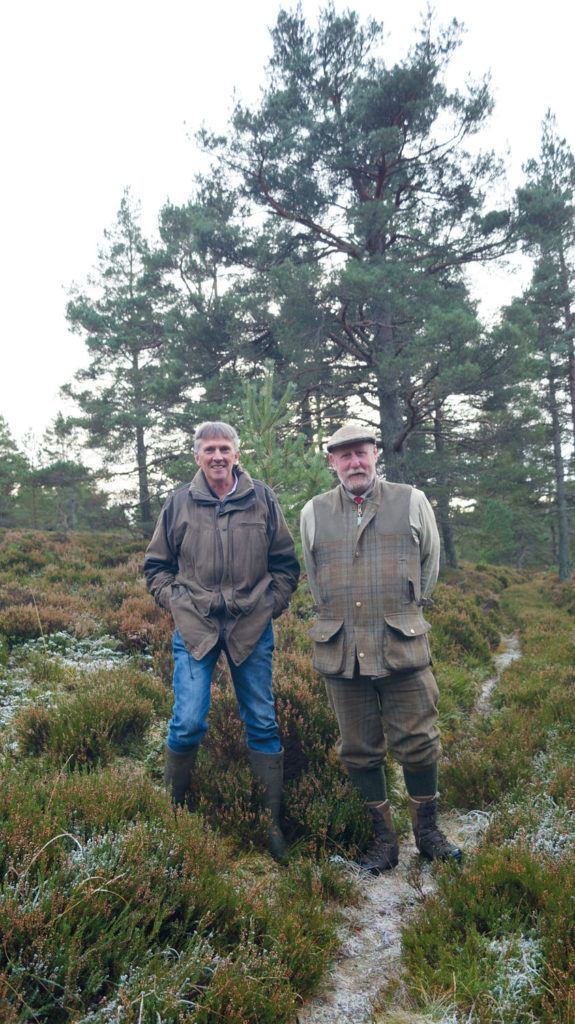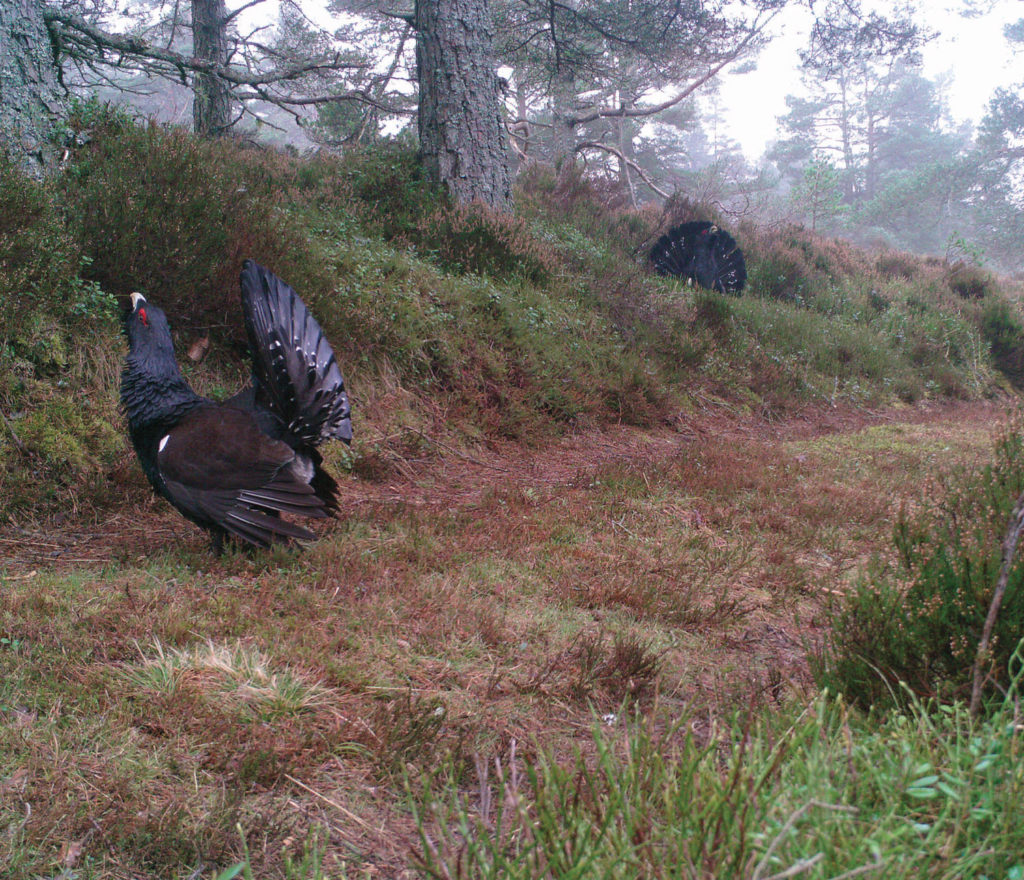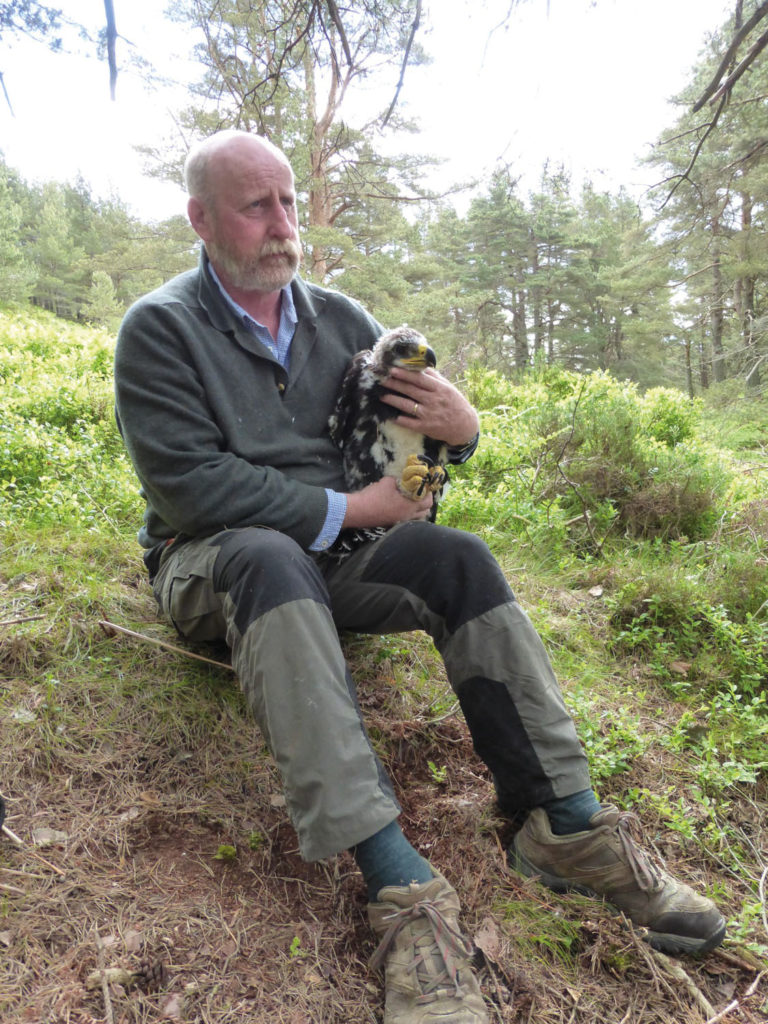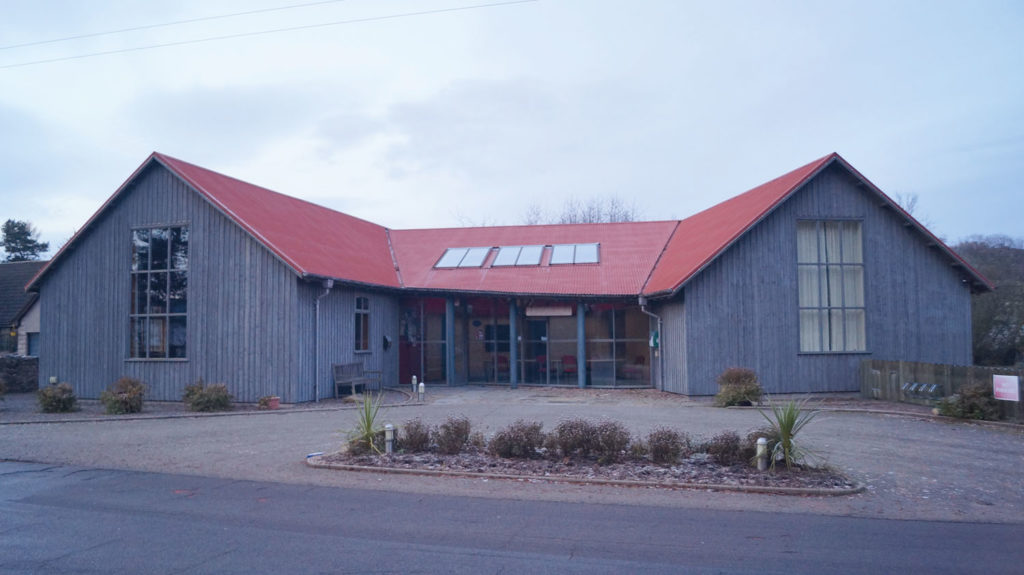Community and conservation are at the heart of Finzean Estate, where Andrew Farquharson and Allan Shand are helping some of the UK’s rarest wildlife

After their reintroduction in the 19th Century, capercaillie numbers grew to 20,000 in the 1970s, but now there are only 1,000 birds left in the UK and they are at risk of a second extinction. A small population still holds out on the 10,000-acre Finzean Estate in Royal Deeside, Aberdeenshire, thanks to decades of conservation efforts on the part of estate manager Andrew Farquharson and the dedication of gamekeeper Allan ‘Hedge’ Shand.
As well as 3,000 acres of commercial forestry, Finzean has some of Scotland’s most easterly Caledonian forest, the rare habitat favoured by the woodland grouse. Andrew said: “30 years ago we fenced off a large area on the edge of the ancient woodland to keep the deer out to allow young Scots pines and the heather to flourish for the benefit of the caper.” Hedge also works with the local deer management group to achieve annual cull targets, which are designed to minimise damage to trees, heather and crops, while maintaining a healthy population of roe and red deer.
Estate facts
- Location: Deeside, Aberdeenshire
- Type of farming: Sheep, beef and arable
- Acreage: 10,000 (3,500 moorland, 3,000 forestry and 3,500 farmland)
- Funding grants: Agri-Environment Climate Scheme
Capers’ diet includes pine needles, birch buds, heather and blaeberry, so ten years ago the estate undertook a huge programme of cutting or ‘swiping’ old rank heather to rejuvenate the ground cover and create light and space for the berries to break through. Blaeberry is a food for moth caterpillars, which in turn are an important source of protein for caper chicks. Small tracks and 10m square open spaces were cut in the long heather to allow chicks to dry out after wet weather. In addition, fox and crow control carried out by Hedge and his neighbouring keepers on a landscape scale protects eggs and chicks of all ground-nesting birds, including capercaillie.
But in spite of their efforts, the low number of caper and their increasing isolation means they are struggling to increase productivity. The estate gamebook entry from 1925 records 70 caper on Finzean Estate alone. Caper came off the quarry list in 2001, and they were not hunted for many years previously due to declining numbers, yet in 2017 only four birds were recorded at the annual lek count for the whole of Birse Parish, which includes parts of Birse, Finzean, Ballogie and Balfour estates.

Andrew said: “We don’t really know why the caper are still in decline. It could be warmer winters leading to a greater tick burden, heavier rainfall around chick- rearing stage, or predation by protected species may be a factor. We have pine marten, which are known to kill capercaillie.”
Restoring capercaillie is very difficult on the edge of its range. Its conservation should, of course, be encouraged wherever the species remains, but with limited funds, GWCT strategy is to concentrate management and research efforts on the remaining stronghold in Strathspey.

Other threatened species are doing better on the estate thanks to a combination of predator control and habitat management. Red-listed black grouse on the hill fringe are stable, with three leks of up to 20 birds, and mountain hares are plentiful on the moor. On the low ground, brown hare numbers have risen rapidly in recent years. A local birdwatcher has spotted 135 species on the estate, and Finzean has many breeding birds of prey including merlin, goshawks, red kites, kestrels, sparrowhawks and buzzards. Their pride and joy is a resident pair of golden eagles, which have bred successfully for three out of the past four years since they arrived. Built in a Scots pine, the nest is carefully guarded. Andrew said: “We keep the site’s location a secret to avoid disturbance. They built the nest up so much one year, the branch snapped, but happily they found another tree.”
Hedge, who has helped the RSPB ring the eaglets said: “It’s interesting to see the remains of their prey at the nest. They have a plucking post for birds including grouse, and I also saw evidence of lambs, crows, a fox and even a badger.”
Conservation work goes on in every part of the estate, including the farmland in the glen. Andrew manages 850 acres in hand and there are seven tenant farms, most of which are in Agri-Environment Climate Schemes (AECS). On the Home Farm, grass margins have been fenced off round a large number of fields, reducing pollution from pesticides and livestock entering the water courses, and fallow plots provide winter food and cover for birds and small mammals.

All the farmers whose land borders the Feugh, a tributary of the Dee running through the glen, were involved in a project to fence the bank to reduce run off and stop cattle and sheep getting into the river. Water and gravel beds are much cleaner, and water voles have returned to the river thanks to a combination of habitat improvement and Hedge’s efforts to trap the predatory American mink. Overwintered stubbles are another popular AECS option among the farmers. These, combined with the game crops and feeders managed by Hedge for the estate’s small syndicate pheasant shoot, all provide important winter food for songbirds.
Having several revenue streams helps the estate maintain its conservation work, even when times are challenging in one area. For example, in a good year, letting a few days of driven grouse shooting contributes significantly to the keepering costs. As part of looking after the moor, Hedge carries out controlled burns every February to regenerate the heather but also to create firebreaks to mitigate the increasing risk of a potentially catastrophic event. Andrew said: “As climate change causes drier conditions, controlled heather burning is going to be more and more important in terms of reducing the risk of wildfire and preventing carbon release. It’s reckoned the emissions from the fire at Elgin last year were equivalent to the whole of the rest of Scotland during the period it burned.”
In spite of investment in moorland management, like in much of Scotland, red grouse numbers at Finzean have dropped in recent years and last season they were so low that there was not even a walked-up day. Andrew said: “The 70s and 80s saw average annual bags of 600 brace, but a downturn began in the 1990s. I think the warmer winters are having an effect. These days we only get snow for a couple of weeks and we have much more rain, whereas we used to have snow on the ground from November to March, which suppressed the tick. But these things go in cycles and we hope to have another driven day in the future.”

Income from farming and forestry, including agri-environment grants, accounts for about 30 per cent of estate revenue. There is some rental income from properties and the syndicate pheasant shoot, but the biggest contributor is the shop and café developed by Andrew’s wife Kate and sister-in-law Catriona, which now brings in 50 per cent. The shop is a vital hub in a tight-knit community where people come to pick up their papers and groceries or eat in the café, where all the game harvested on the estate is on the menu.
It follows a Farquharson family tradition of initiatives to support the community. In the 1970s house prices skyrocketed due to the oil boom in Aberdeen and locals were priced out. The result was young people forced to move away and the number of children at the primary school dwindling to below 20. Andrew’s parents made available plots of land with planning permission at low cost to people raised in the area. Decades later there are several young families and the school has more than 60 pupils. Andrew said: “Many of us in the village grew up together. Most days I see people I went to primary school with, many of whom still work on the land.”

Other local projects supported by Andrew and his older brother Donald include a recently renovated village hall, which is in constant use, a footpath linking the shop to the village, and even a graveyard. Andrew said: “Our church had no graveyard, so we gave a plot of land, the local farmers helped create the path, and many others volunteered to clear it.”
Conservation in numbers
- 135 bird species counted on the estate
- 3 broods of golden eagle fledged
- 20 black grouse at three leks
- 220 hectares of native woodland protected
Thanks to these initiatives, Finzean scores well on social, economic and cultural sections of the Wildlife Estates Scotland (WES) accreditation, which it has achieved every year since 2014. Supported by the Scottish Government and SNH, WES assesses the integration of wildlife conservation with local economy and community through an accreditation system verified by an external inspector. Andrew believes the scheme holds the key to solving the issues facing driven grouse management.
He said: “Rather than the idea of licensing grouse moors and taking away the right to run a moor, government should make WES compulsory for estates. That way you would preserve the conservation benefits of driven grouse management and drive up standards.” Looking ahead, he believes it is essential that future agri-environment schemes take more heed of the land managers’ practical understanding and are more flexible and better funded. “We are currently reviewing the estate and looking for ways to pass Finzean to the next generation in a form that will build on the conservation successes we have already achieved without being a financial burden.”
This case study is taken from our book Moorland Conservationists, available here for just £3.99.
